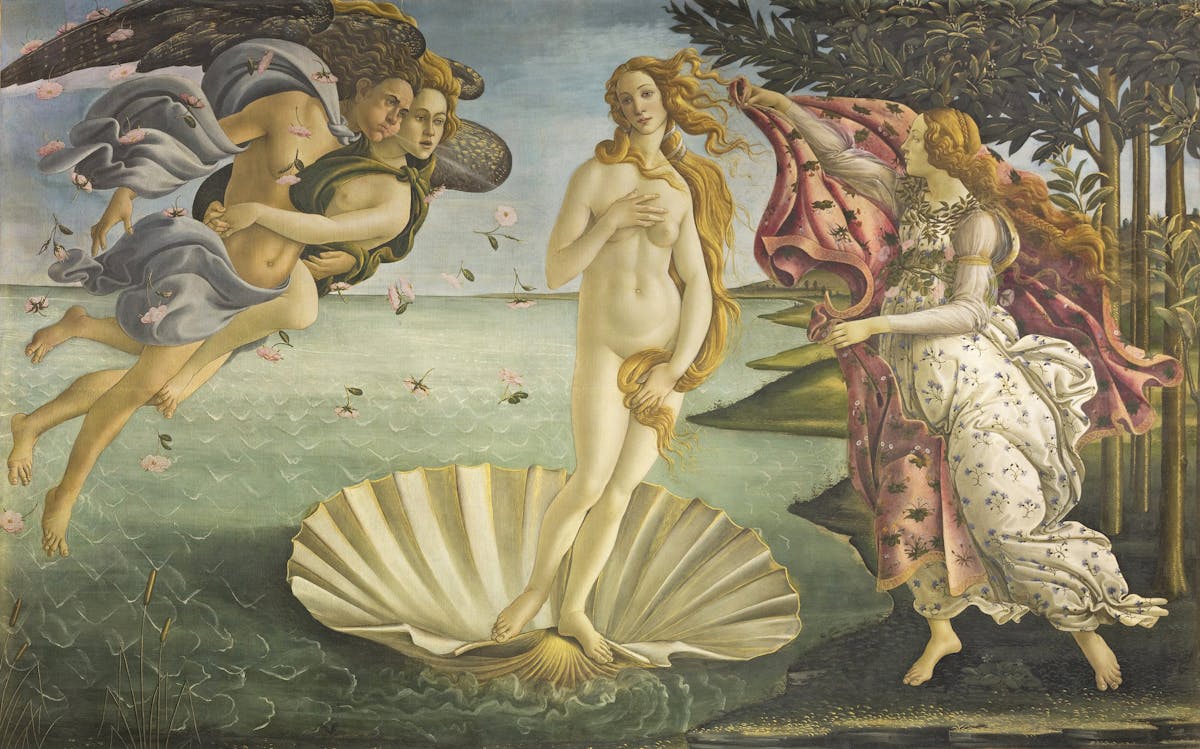
Birth of Venus, Botticelli
Whilst the association of cowrie shells and vulvas is never explicitly stated by ancient writers, there are a few clues which draw connecting lines between the two, even if never stating the obvious. In addition to the cowrie girdles placed near the womb and vulva, etymological links suggest a linguistic parallel to our visual one. The greek κτεις means comb, ribs, pudenda muliebria (a latin euphemism for vagina which Ancient Greek dictionaries still employ in moments of severe victorian embarrassment) and shellfish. To make things even more exciting, the latin for comb is pecten which can also mean scallop, pubic bone or pubic hair.
Slightly more obscurely, the 13th century Old Italian word for cowrie shells was porcellana which developed later into the word porcelain due to the glossy thin material of the shells. The Old Italian word might still have links to the latin porcus meaning pig or sow, as it was thought that the convex side of the shell looked like a sow (I’m not really sure how!). Porcus was also a derogative word for – wait for it – the pudenda muliebra.
The Sumerian ideogram (character) for pregnancy is made up of a combination of the sign ‘inside the body’ and the sign ‘water’. The exact same combination is used for ‘shell’, iskilla in Sumerian (Akkadian, isqillatu). The word ‘shell’ appeared on a (now lost) tablet about birthing rituals. A surviving commentary of the text quotes the line “Let him/her bring to light the one in the body of the shell” (Stol, 2000), providing evidence of the metaphor in use.
